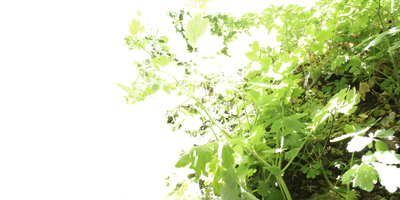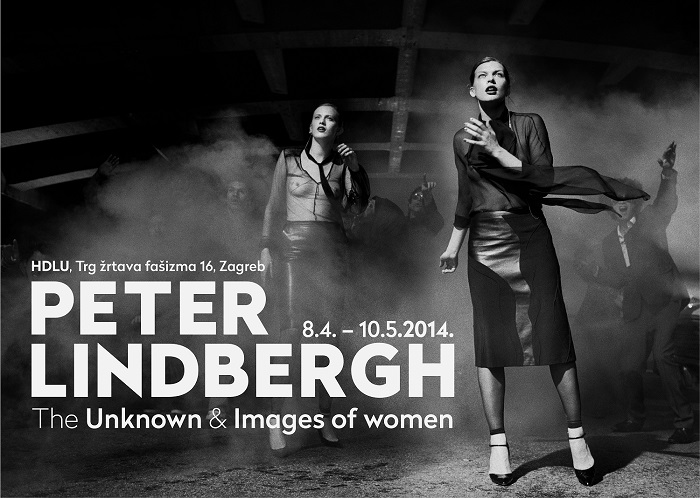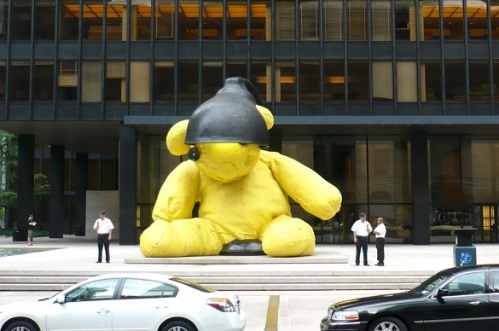Category: Exhibitions
(IN)CONSTANCY OF SPACE
Collective exhibition of Dutch and Croatian artists.
The Ring Gallery
September 24 – October 12
Opening: September 24, 8 p.m.
The Ring Gallery and the Croatian Association of Artists (HDLU) have pleasure to invite you to the opening of (IN)CONSTANCY OF SPACE, a collective exhibition showing the artworks by Dutch and Croatian artists of younger and middle generation.
The exhibition will be held at the Ring Gallery, in the building owned by the Croatian Association of Artists, from the 24th September to 12th October. The Opening is on the 24th September, 2014, at 8 p.m. The exhibition will be officially opened by Her Excellency Ellen Berends, ambassador of the Kingdom of the Netherlands in Croatia.
The exhibition shows the artworks by Dutch and Croatian visual artists who express themselves in the media of video, video-installations, ambiental installations, animations, strip cartoon, graphic arts, painting and drawings.
The Netherlands and Croatia are two countries with different historical, cultural and geographical determinants, but at the same time they are the members of the EU and thus make an interesting complementary duo.
The exhibition (IN)CONSTANCY OF SPACE focuses on the way contemporary Dutch and Croatian artists deal with architecture and the spaces it shapes. In their works of art, buildings are not only attractive themes, but they carry various symbolic, sociological, psychological or ideological connotations. The exhibition also touches on the issue of the position of architecture and its spaces in the mind of modern man.
The exhibition puts the artworks into 4 categories:
Life, Power and Death
On the Boundary between Utopia, Fantasy and Dystopia
Claustrophobia and Phases
Visions and Boundaries
The following artists will present their artworks in the exhibition: Shigeo Arikawa, Anke van den Berg, Tanja Deman, Darko Fritz, Arend Groosman, Tea Hatadi, Willem van der Hofstede, Lilian Kreutzberger, Margareta Lekić, Gabriel Lester, Maja Marković, Ferenc Molnar, Zoltan Novak, Vedran Perkov, Sara Rajaei, Ana Sladetić, Rik Smits, Robert Šimrak, Goran Škofić, Rob Voerman and Danijel Žeželj.
Curators and authors of the concept: Vanja Babić & Neva Lukić .
The exhibition is accompanied by a lavishly produced catalog with the curators’ texts and the photographs of artworks.
The exhibition has been kindly supported by funding from the Ministry of Culture of The Republic of Croatia, City Office for Education, Culture and Sports Zagreb, Netherlands Embassy in Zagreb and Stroom Den Haag.
 Seven about the reality
09.05. – 22.05.2014
Gallery Konduktorownia
Czestochowa, Poland
www.konduktorownia.eu
Seven about the reality
09.05. – 22.05.2014
Gallery Konduktorownia
Czestochowa, Poland
www.konduktorownia.eu
Exhibition of seven Croatian mid- and young generation artists presents seven different and specific artistic approaches that tell seven stories about present and reality, stories that get close to each other at certain points. Through their visions, interpretations of the media and their own constructed way of perception, they present certain issues to the observer. By using different media approaches they analyze almost all the key aspects of our present, situations we think about on a daily basis, at conscious and subconscious levels – examining ourselves and our own personality, questioning and exploring the details of environment which surrounds us on a day-to-day basis, by setting these details on a new aesthetic level, and above all analyzing social statuses and events, norms and conventions, which are products of new times.
By the balanced power and sensibility Mia Orsag brings insightful work which attempts to examine and analyze some of the key metaphysical questions – life, relationship, identity.
Her sculpture 2/4 presents the mathematical formulation, the redistribution of ”safe and sound”, and of what is subject to change due to the impact of a number of everyday factors.
Two quarters are the positive energy, stability and eternal brace, while the remaining two quarters are incomplete, undefined and ready for the changes that the future brings and maybe at some point circumstances allow the separate halves become whole.
Patinated drawings of spaces and figures, which are here and at the same point they start to disappear, from the series No One No Where, are the result of her preoccupation with the present and the key issues; identity, existence and change, that she wants to share with the observer.
The very process of scribbling, drawing, erasing and scratching is very easily associated with time-consuming and painstaking process of knowing the world and ourselves, moreover the result of the search often remains vague and undefined. Mia’s drawings are trying to investigate exactly these extreme fields of knowledge and existence.
Works of Mirjana Vodopija, from the series Breath and Herbs are the result of research of ordinary, everyday elements of the environment, especially unsightly vegetation, which due to the play of light takes on a new dimension, bringing into question the limit of existence. A great source of inspiration for her work and research, Mirjana Vodopija finds in nature and through her experiments in various medias, such as graphics, drawing, photograph or object, she is able to successfully articulate her ideas and gives the opportunity to the observers, by broadening their horizons and possibilities of perception. Quite common elements appear in new forms and take on new characteristics. With the help of photography, the artist presents to us already naturally and clearly defined objects, which by the help of the limited light moments she transformed into her final idea – the border area where something exists and disappears. Her works as a result of patient research, conscious and unconscious moments where ideas develop, educate the view and raise issues about the infinite possibilities of perceiving the world around us.
Questioning of the border worlds, and her own personality and reality are brought in the works of Marina Fernežir, which she created in the last two years, as part of the cycle ”Alchemy of dreams”.
Marina Fernežir has a specific artistic style, built on the foundations of her conservation and restoration activities.
Through the works in this cycle we follow development of her inner worlds, which are the images blended with elements of reality, but still remained on the border between dreams and reality. It is a combination of concrete and familiar elements in the picture, figures and landscapes, with stylized elements of architecture and unexpected motifs, that allows Marina Fernežir’s paintings to transcend the banality of everyday life scenes. What was at the beginning an exploration of the basic elements of artistic creativity, resulted in a transformation of the motifs into visual language similar to the visions of dream worlds.
Elvis Berton presents works from three different cycles, moving from intimate Istrian porches over the stylized interpretations of the nature and the actual artistic perception of objects in it, to the criticism of today’s ”shifted” society. The work from the series ”Porches”, brings a touch of Istrian atmosphere, setting styled porch in the landscape of great tension, constantly waiting for the relief. Landscapes and plants in Berton’s paintings are styled almost to the limit, tending to represent his personal visions and perceptions of the living nature.
At first seemingly only lovable lemon motif, defined by the artist’s bold and specific visual expression, can be considered as a motive from everyday life, but Berton’s Lemons assume in this case another function – disclosing putridity, acidity and decadence of modern consumerist society.
Artistic tandem Žižić / Kožul directly and clearly present their work, which is based on the relationship between modern art and marketing of high class fashion and luxury industry. They are opening the question of recycling elements and phenomena of the contemporary art in marketing propaganda and what happens when contemporary art appropriates the aesthetic norms and rules of major marketing giants. They question the quality of the products that are on a daily basis served to consumers and the manipulation of advertising campaigns, which has found an ideal breeding ground in today’s time of impersonality of submission, apathy and dullness of modern society. ”Good taste” of the elite representatives of such society has long ago become questionable, and thus the taste of the vast majority of the world – a whole series of ”ordinary” people who often by all means go beyond their possibilities, in order to follow the ”dogma” of aggressive and manipulative marketing.
The works of the young sculptor Vojin Hraste are the excellent continuation of questions that opened Žižić / Kožul, but Hraste turns it to the perception of himself. Twisted perception of his own personality manifests itself in a self-portrait increased by 50 % compared to the natural size, filled with plastic hair, which transforms him beyond recognition, while subtly alluding to the popular ventures of installing silicone implants, which can change (distort) a man from head to toe.
Hraste clearly, directly and literally questions the giant of the film industry, Hollywood, which from day to day imposes a multitude of aesthetic norms and rules, whose correctness and logic is truly questioned just by few people. Entire film and media industry, bring to the individuals countless possibilities of ”correction” of their own personality, behavior, attitude and style, where it becomes clear that very benign is physical, and more worrying is its mental transformation.
Artworks of Tea Hatadi, complete this joint exhibition of seven Croatian artists, who in different ways and by various methods talk about the present and immediate preoccupations.
By specific aesthetic approach, Tea Hatadi seductively attracts us to focus our attention on her work, disclosing clearly and directly her private information, with a defined and specific attitude talks about her position of a contemporary artist, criticizing moments of the struggle for survival while taking her place on the artistic scene.
Contradiction is one of the foundations of Tea’s works, skillfully balancing between the composition of seductive and gentle, and strong, sharp, direct and to a certain extent negative elements.
Tea’s work Censorship of Happiness, clearly articulated artistic achievement, that is visually striking and attractive, brings a look at a relative term of happiness. Her colleagues, artists talk about happiness, which is closely related to their artistic creativity, sometimes it is a spark of happiness that came in an unexpected moment, and sometimes their luck is a result of negative situations. Tea’s censorship comes down to the visual aspect, using silhouettes in the background in sepia tone, draws the viewer to listen to them closely and examine their own perceptions of happiness.
This goes back to the starting point of personal analysis and analysis of abstract philosophical concepts, thus seven stories become the whole.
Sara Čičić
Opening of the exhibition on 15th of April 2014 at 7 pm
April 15 – April 24, 2014
Karas Gallery Praška 4 10000 Zagreb, Croatia“Shift”, a spatial installation art by Alma Trtovac, represents a type of virtual reality walled within an eight-sided chamber by forty-seven acrylic paintings on canvas. As painting translates into architecture, the very act of painting also becomes an act of building, construction and reconstruction.
The author constructs a hybrid urban landscape based on the mental images of two cities – Zagreb and Dresden. As they share the traumatic ordeals of war and destruction, a fluid urban organism emerges from their experiences. The spatial concept of the installation is based on the cycle of life, everlasting change, but also on the permanent repetition of history. The symbolism of the octagonal space is found in the interpretation of a classic Chinese text, I Ching: The Book of Changes, its philosophy being close to the author’s sensibility. The four main walls represent the four sides of the world, but also the four seasons. This newly created city contains within itself the entire world. The subjects of change, the everlasting dynamics of energy and the uninterrupted process are obvious when one approaches the installation – movement and recognizing the vibrating chamber are transformed into a “work in progress”, an experience which repeats itself – each time in a different way. The urban whole remains elusive. The schizophrenic and fragmented character of the contemporary city, the artificially joined pieces of urban tissue appear in flashes and compel us to circle endlessly, repetitively wandering through the neon urban landscape.
The colors of the urban environments react to the UV lights and flash almost aggressively as they are exposed to the lights’ stroboscopic movements. The flickering lights suggest chaos and decay, out of which something new is born. The observer is bombarded with lights, evoking the real traumatic experiences of the two cities. Through her artistic work, the author tries to intimately involve the observer – the experience of the cities becomes our experience, the discomfort one feels stems from participating within the simulated atmosphere.
The lights “train” the observer, who is forced to adapt to the new situation and the newly created urban landscape. Art and space take on an almost Benjaminian role as they become a training ground for new subjects and new psyches. The space forces the observers to adapt to it, but also to seek meaning within it, to critically approach the situation, rather than blindly accepting it.
One can no longer escape to Utopia – art has to maintain alertness and encourage a critical approach. It cannot be seen as “light” in character – rather than comforting us with art for art’s sake, the bright flashes hit us directly and force us to act, to accept the new situation and give in to change.
Resembling Fritz Lang’s scenographic collage, a sort of timeless metropolis is created as the paintings’ frames dissolve within the neon chaos. In this cycle of destruction, a tear appears and out of it emerge the possibilities for change and creation. The universal experiences of pain and war force us to rethink history, to move beyond the trauma through revealing it, much like the ashen hair of Shulamite in the works of Anselm Kiefer. The phoenix city rises from the ash, born anew, strengthened by the experience of individual and collective memory colliding and the healing which results.
Ana Bedenko
Born in Zagreb in 1988. In 2012, received her Master of Fine Arts Degree at the Academy of Fine Arts in Zagreb, under the mentorship of Professor Zoltan Novak.
Working hours: Tuesday – Friday 11 am – 7 pm, Saturday and Sunday 10 am – 2 pm; closed on Mondays and holidays.









